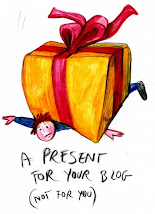Janmashtami is the joyful celebration of Lord Krishna's birth which is also known as Sri Krishna Astami. Janma’ means birth and ‘ashtami’ means the eighth. It is said that Lord Krishna was born on Astami. Janmashtami takes place on the eighth day of the second fortnight in the month of Sravana.
Janmashtami is one of the most widely celebrated Hindu festivals and it is celebrated with devotion and pomp in homes.
From the time, Devki conceived Sri Krishna, she began to glow and exude divine light. The prison walls glowed with the aura of the new born infant. Atmosphere of peace and happiness prevailed all over, forests were all green and full of trees with all kinds of beautiful flowers, rivers were all swollen due to joy, peacocks began to dance in sheer joy and people in all villages started being happy.

The ritual is to fast the previous day (Saptami, seventh day), which is followed by a night-long vigil commemorating the birth of Krishna at night, and his immediate removal by his father Vasudeva to a foster-home for safe-keeping.
At midnight, the deity of the infant Krishna is bathed placed in a cradle and worshipped. The fast is completed after aarti, a special prayer.
Major celebrations of Krishna Janmashtami takes place at midnight as Krishna is said to have made his divine appearance in that hour. Fasting, bhajans, pujas and many other rituals mark Janmashtami celebrations in India.

In the early morning, ladies draw patterns of little children's feet outside the house with rice-flour paste, walking towards the house. This symbolizes the entry of the infant Krishna into his foster-home.
Janmashtami is celebrated with fervor in India. Euphoria for the festival is not just restricted to Mathura - the birth city Mathura but pervades in rest of India too. The birth of Lord Krishna is one of the most popular festivals of Hindus and they celebrate the occasion with great joy and delight.
The festivities include various rituals being followed religiously. Temples all over India engage in various ceremonies and prayers in honour of Lord Krishna. Chanting of shlokas, readings from religious texts, singing devotional songs and dance performances are a common sight.
Important and common customs observed in different states include performance of rasleelas by professional artistes. The festival is thus celebrated with great joy and communal togetherness by one and all.
 While it is the festival that is celebrated in North India as Janmashtami, in the South, the festival is celebrated as Srijayanthi or Krisnajayanthi or also as Sri Krishnajanmashtami.
While it is the festival that is celebrated in North India as Janmashtami, in the South, the festival is celebrated as Srijayanthi or Krisnajayanthi or also as Sri Krishnajanmashtami.
Janmaashtami, popularly known in Mumbai and Pune as Dahi Handi is celebrated with enormous zeal and enthusiasm। The ceremony of 'Dahi Handi' wherein enthusiastic young men break an earthen pot filled with curd, depiction of 'Jhankis' and other decorative items to show important events of Lord Krishna's childhood. The handi is positioned at a convenient height prior to the event; the topmost person on the human pyramid tries to break the handi by hitting it with a blunt object, and when that happens, the curd is spilled over the entire group, symbolizing their achievement through unity.
Various Handis are set up locally in several parts of the city, and groups of youngsters, called Govinda, travel around in trucks trying to break as many handis as possible during the day.

Many of the more affluent homes of Hindus have a separate ‘puja’ or prayer room. Where this is the case, the Janmashtami rituals are carried out in the puja room. Otherwise a separate space in the home is earmarked for the celebrations.
The puja room or earmarked space is first thoroughly scrubbed clean.After all, a divine birth will be enacted there. The room or area has to be brightly lit. A string of small flashing electric bulbs is often used for festive effect. The puja room is filled with fragrance using ‘agarbattis’ or fresh flowers.
Many families that celebrate Janmashtami with fervor have Radha Krishna as the main deities in the puja room. The idols of Radha and Krishna are bathed with scented water and the ritual sandalwood paste is applied. Then the idols are dressed in a new set of apparel. They are adorned with suitable jewellery.

Usually the Janmashtami cradle is a miniature cradle made of silver. Cradles made from sandalwood or other material are also used. On a soft mattress inside the cradle a reclining idol of Krishna is laid out. In some cases, worshipers use small toy dolls. The infant is tucked in a silken sheet.
During the old times, the cradles had long ropes tied to them. The mother kept the other end of the rope near at hand and while busy in the household chores tugged the ropes to rock the cradle from afar. The Janmashtami cradle has a similar chain attached to it so that devotees can rock the cradle while Krishna sleeps.

Another popular jhanki is that of Bal Gopal. Gopal is another name of Krishna. In this jhanki the centerpiece is an idol of Krishna on his hands and knees in a crawling position. Next to the idol are placed small silver or earthen containers with freshly made butter in them. This recreates Krishna’s habit of crawling to the butter pots and stealing butter. For this reason he is also known as ‘makhan chor’ or butter thief. The butter is sweetened and colored with saffron.
Gopal translates as 'cow herd.' When Krishna grew older herding the cows was the task assigned to him. This jhanki depicts an idol of Krishna standing with his legs crossed and playing a flute amidst statues of cows. The more creative devotees add grass and mango trees and the River Yamuna in the jhanki.
The rituals end with the Janmashtami prasad of sweetened butter being distributed.

Janmashtami is one of the most widely celebrated Hindu festivals and it is celebrated with devotion and pomp in homes.
From the time, Devki conceived Sri Krishna, she began to glow and exude divine light. The prison walls glowed with the aura of the new born infant. Atmosphere of peace and happiness prevailed all over, forests were all green and full of trees with all kinds of beautiful flowers, rivers were all swollen due to joy, peacocks began to dance in sheer joy and people in all villages started being happy.

The ritual is to fast the previous day (Saptami, seventh day), which is followed by a night-long vigil commemorating the birth of Krishna at night, and his immediate removal by his father Vasudeva to a foster-home for safe-keeping.
At midnight, the deity of the infant Krishna is bathed placed in a cradle and worshipped. The fast is completed after aarti, a special prayer.
Major celebrations of Krishna Janmashtami takes place at midnight as Krishna is said to have made his divine appearance in that hour. Fasting, bhajans, pujas and many other rituals mark Janmashtami celebrations in India.

In the early morning, ladies draw patterns of little children's feet outside the house with rice-flour paste, walking towards the house. This symbolizes the entry of the infant Krishna into his foster-home.
Janmashtami is celebrated with fervor in India. Euphoria for the festival is not just restricted to Mathura - the birth city Mathura but pervades in rest of India too. The birth of Lord Krishna is one of the most popular festivals of Hindus and they celebrate the occasion with great joy and delight.
The festivities include various rituals being followed religiously. Temples all over India engage in various ceremonies and prayers in honour of Lord Krishna. Chanting of shlokas, readings from religious texts, singing devotional songs and dance performances are a common sight.
Important and common customs observed in different states include performance of rasleelas by professional artistes. The festival is thus celebrated with great joy and communal togetherness by one and all.
 While it is the festival that is celebrated in North India as Janmashtami, in the South, the festival is celebrated as Srijayanthi or Krisnajayanthi or also as Sri Krishnajanmashtami.
While it is the festival that is celebrated in North India as Janmashtami, in the South, the festival is celebrated as Srijayanthi or Krisnajayanthi or also as Sri Krishnajanmashtami.Janmaashtami, popularly known in Mumbai and Pune as Dahi Handi is celebrated with enormous zeal and enthusiasm। The ceremony of 'Dahi Handi' wherein enthusiastic young men break an earthen pot filled with curd, depiction of 'Jhankis' and other decorative items to show important events of Lord Krishna's childhood. The handi is positioned at a convenient height prior to the event; the topmost person on the human pyramid tries to break the handi by hitting it with a blunt object, and when that happens, the curd is spilled over the entire group, symbolizing their achievement through unity.
Various Handis are set up locally in several parts of the city, and groups of youngsters, called Govinda, travel around in trucks trying to break as many handis as possible during the day.

Many of the more affluent homes of Hindus have a separate ‘puja’ or prayer room. Where this is the case, the Janmashtami rituals are carried out in the puja room. Otherwise a separate space in the home is earmarked for the celebrations.
The puja room or earmarked space is first thoroughly scrubbed clean.After all, a divine birth will be enacted there. The room or area has to be brightly lit. A string of small flashing electric bulbs is often used for festive effect. The puja room is filled with fragrance using ‘agarbattis’ or fresh flowers.
Many families that celebrate Janmashtami with fervor have Radha Krishna as the main deities in the puja room. The idols of Radha and Krishna are bathed with scented water and the ritual sandalwood paste is applied. Then the idols are dressed in a new set of apparel. They are adorned with suitable jewellery.

Usually the Janmashtami cradle is a miniature cradle made of silver. Cradles made from sandalwood or other material are also used. On a soft mattress inside the cradle a reclining idol of Krishna is laid out. In some cases, worshipers use small toy dolls. The infant is tucked in a silken sheet.
During the old times, the cradles had long ropes tied to them. The mother kept the other end of the rope near at hand and while busy in the household chores tugged the ropes to rock the cradle from afar. The Janmashtami cradle has a similar chain attached to it so that devotees can rock the cradle while Krishna sleeps.

Another popular jhanki is that of Bal Gopal. Gopal is another name of Krishna. In this jhanki the centerpiece is an idol of Krishna on his hands and knees in a crawling position. Next to the idol are placed small silver or earthen containers with freshly made butter in them. This recreates Krishna’s habit of crawling to the butter pots and stealing butter. For this reason he is also known as ‘makhan chor’ or butter thief. The butter is sweetened and colored with saffron.
Gopal translates as 'cow herd.' When Krishna grew older herding the cows was the task assigned to him. This jhanki depicts an idol of Krishna standing with his legs crossed and playing a flute amidst statues of cows. The more creative devotees add grass and mango trees and the River Yamuna in the jhanki.
The rituals end with the Janmashtami prasad of sweetened butter being distributed.








18 comments:
Nice decorated post. Pictures are beautiful. You manner of description is very nice and simple.
Very good post.
thanks, nice post. Janmashtami brings fond memories of childhood. excellent description. TC:)
Happy Janmashtami...well written!!!
Hey how u got the tri color on the cursor..do tell how to apply on my blog...i just loved it!!
Your blog is far more interesting and easy to read than most books.
Babli,you have a lovely collection of pics.Happy independence day to you and your readers.
Happy janmashtami! :)
I did not know so much about janmashtmi before i read your post. Informative and nice! :)
Happy Janmashtmi and A happy independence day. Jai Ho.
kyaa baat hai....main jaraa der se aayaa....magar abhibhoot hokar ja raha hoon....!!
Thanks for a very informative post. I really need to learn more about India, and your blog is very helpful. I also thank you for your photos and illustrations. I like your cursor.
Very well written about the rituals.
that was a really informative post..with beautiful and colourful pics..it was a nice read, especially coz janmashtami is one of my favourite festivals..:)
nice article...happy (belated) Janamasthmi!!
when i read at ur profile australia, quneensland. .. image of symonds flashed in my mind ... and expected some flashy stuff over here ....
but you surpriced me and did that in a classy, religious style ..
lovely posts ...
Gorgeous Pictures and very interesting post about the birth of Lord Krishna. I know so little about Hinduism and it is so interesting. It looks a bit like our Christmas celebration: the birth of Christ.
Thanks for sharing!
BTW my second daughter lives in north Queensland, in Cooktown!
It was nice reading in detail about the celebration and this post reminds me the scenes from tele serials watched in childhood related to Krishna. The cradle part sounds sweet!
खूबसूरत चित्रों से सजी-सँवरी
इस पोस्ट के लिए बधाई!
its really very nice & beautiful....
Very Happy Janmashthami to all...
Happy Birth Day Kanha ji:)
Wao! Very nice pictures. Love is the essence of life that's what we learn from Krishna's word. .
The colorful pictures makes aglint fresh and cheerful mind.
Post a Comment